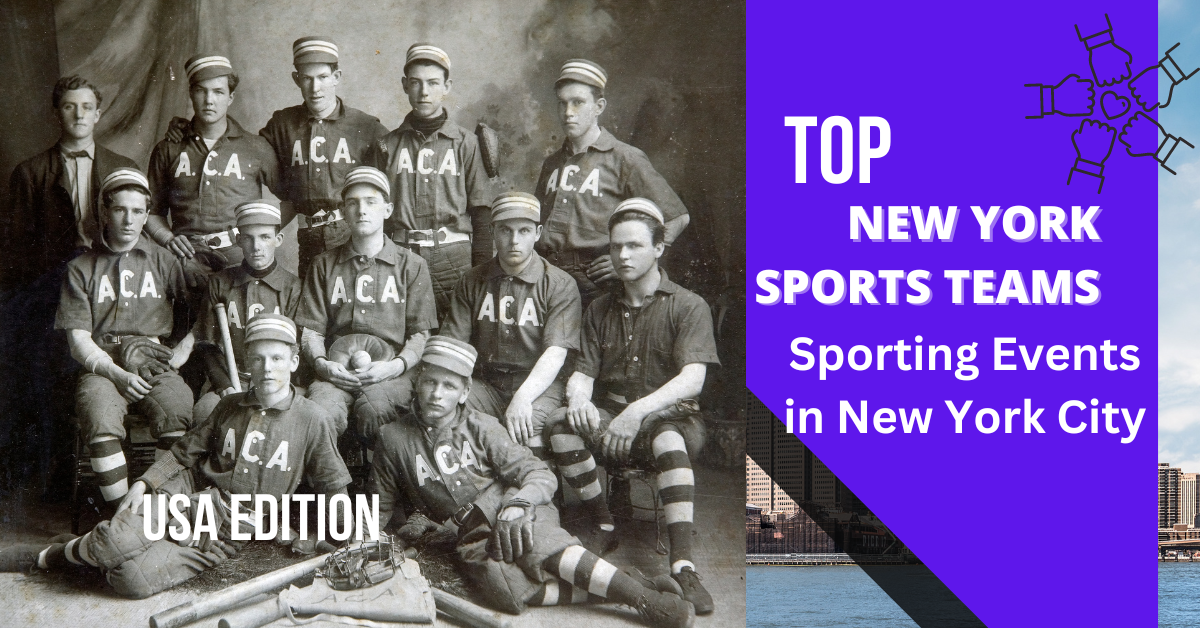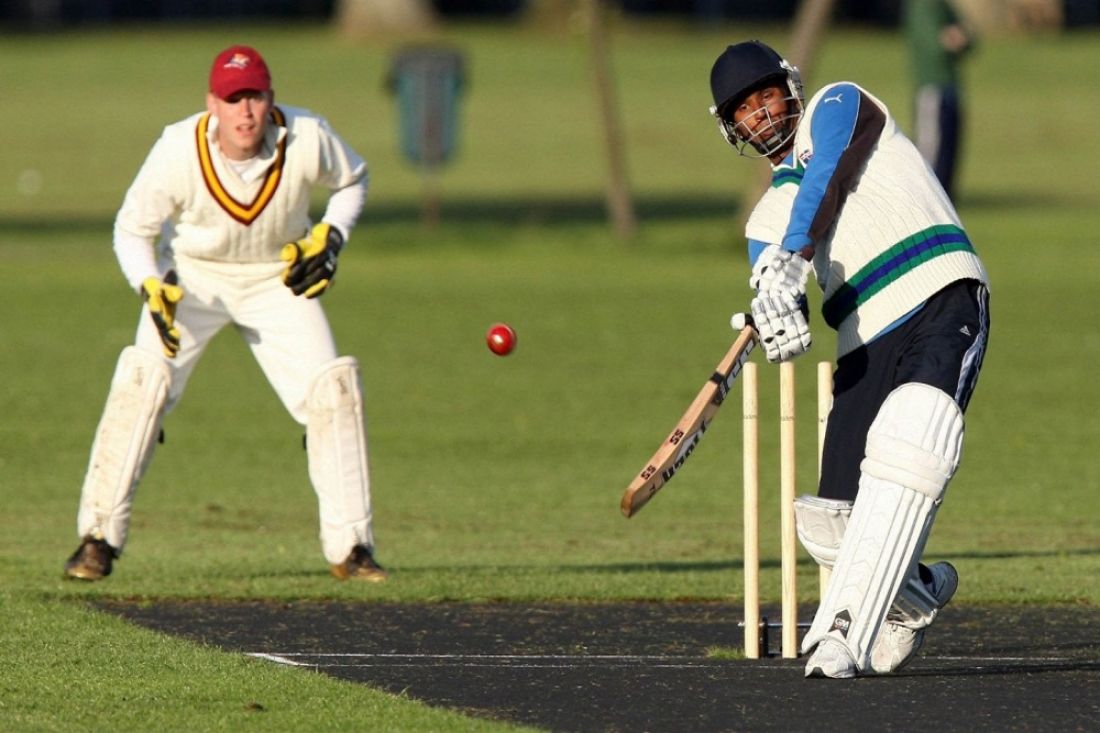Introduction
In this fast world, there are many sports that are loved by millions of people in this world, one of them is baseball, which millions of people want, watch and play. In baseball, there are only 9 players who try to lead their team to victory. In baseball, the goal is to hit a thrown ball and successfully run around its four bases to score runs. Baseball has many old names, some of which are: town ball, round ball, goal ball, three-corner cat, field-base, the New England game. In today’s article we will tell you about baseball. Team sports like baseball emphasize cooperation, strategy and skill, which makes it a beloved pastime in many cultures.
The History of Baseball as a Team Sport
Baseball’s starting points follow back to the eighteenth hundred years in Britain and acquired ubiquity in the US in the nineteenth 100 years, turning into America’s public distraction. From that point forward, it has advanced essentially, with proficient associations shaping across the globe. Today, Significant Association Baseball (MLB) in the US remains as one of the most noticeable expert baseball associations around the world.
Key Components of Team Sports Baseball
The Playing Field and Equipment
The baseball field is normally spread out with four bases in a precious stone shape. The hardware incorporates a bat utilized by the player to raise a ruckus around town pitched by the rival group’s pitcher. Gloves are worn by players to help with getting the ball.
Team Structure
Each group includes nine players who are situated decisively on the field:
- Pitcher
- Catcher
- Infielders (First baseman, Second baseman, Shortstop, Third baseman)
- Outfielders (Left defender, Center defender, Right defender)
- Gameplay Dynamics
Baseball is partitioned into innings, with each group shifting back and forth among batting and handling. The batting group plans to score runs by raising a ruckus around town and going around the bases, while the handling group endeavors to get hitters out through different means, like getting the ball or labeling players.
Strategy and Tactics in Team Sports Baseball
Effective groups utilize different procedures to outmaneuver their adversaries:
- Pitching Strategies: Pitchers utilize various kinds of pitches (e.g., fastballs, curves, sliders) to maintain hitters speculating and gain a benefit.
- Guarded Movements: Groups decisively position their defenders in light of the propensities of the hitter, planning to improve the probability of making cautious plays.
- Hostile Systems: Players might utilize strategies like hitting or hitting for power, contingent upon the game circumstance and the abilities of the rival group.
Physical and Mental Benefits of Playing Team Sports Baseball
Taking part in baseball offers various advantages:
- Actual Wellness: Players take part in running, tossing, and batting, advancing cardiovascular wellbeing and strong strength.
- Coordination and Reflexes: Handling and batting require speedy reflexes and dexterity, which improve with training.
- Cooperation and Interactive abilities: Baseball encourages fellowship and collaboration, as players should cooperate to make progress.
Boundaries and Residency
Baseball is a game with a ton of special principles and phrasing, and understanding limits and residency can be key for fans, players, and groups. Here is a breakdown:
Boundaries
Field Limits:
- Fair and Foul Domain: The field is partitioned into a fair area (where balls are in play) and foul region (where balls are not in play). The foul lines stretch out from home plate to the outfield walls or limits. Balls hit between these lines are viewed as fair.
- Outfield Fences: The separation from home plate to the outfield wall differs by ballpark. Homers are normally hit over the wall an in fair area.
- Infield and Outfield Lines: The base ways and the lines from home plate to first and third bases are essential. Balls that land in the infield or outfield can have various guidelines for play contingent upon where they land.
Base Limits:
- Bases: There are four bases (first, second, third, and home) organized in a precious stone. Players should contact each base in grouping to score runs. Stepping on or contacting a base appropriately can influence whether a player is protected or out.
Burrow and Group Regions:
- Burrows: Groups sit in holes along the first and third baselines. The region is viewed as out of play however is significant for group technique and player rest.
Residency
Player Residency Rules:
- Draft and Free Office: Players’ qualification for the MLB draft or free office is still up in the air by their residency or past playing history. For example, global players should comply to rules about marking and residency in their nations of origin.
- Small time Associates: Players are appointed to small time groups frequently founded on their improvement needs and now and again their area comparative with the significant association club.
Nearby Guidelines:
- Home Ballparks: Groups normally have home ballparks that are their headquarters. The area of these parks can impact nearby fan commitment and local area support.
- Association Rules: Various associations or levels of baseball(secondary school, school, and so on) may have explicit residency rules for player qualification. For instance, secondary school competitors could have to go to a school inside a specific region.
In both expert and novice baseball,understanding these limits and residency rules guarantees fair play and appropriate association of the game. In the event that you have explicit parts of these subjects you’re interested about, go ahead and inquire!
Rules and gameplay
Baseballis an exemplary game with a bunch of decides and ongoing interaction mechanics that could appear to be intricate from the outset, yet they’re very consistent once you get the hang of them. Here is a fundamental outline:
Objective
The principal objective in baseballis to score a greater number of runs than the rival group. A run is scored when a player effectively adjusts four bases and gets back to home plate.
Groups and Positions
- Groups: Each group has nine players.
- Positions: The nine positions are pitcher, catcher, first baseman, second baseman, shortstop, third baseman, left defender, focus defender, and right defender.
Essential Ongoing interaction
- Inning Design: A ball game is partitioned into nine innings. Every inning comprises of each group having one go to bat and one go to play protection.
- Batting: The group at bat attempts to score runs by stirring things up around town ball and going around the bases.
- Protection: The guarded group attempts to get players out through different strategies like getting fly balls, striking out hitters, or labeling bases.
Scoring Runs
A player should stir things up around town and race to initially base, a respectable halfway point, third base, lastly back to home plate to score a run.
On the off chance that a hitter stirs things up around town out of the field’s limits an in fair area (a grand slam), they consequently score and all players on base likewise score.
Key Guidelines
- Pitching: The pitcher tosses the ball from the pitcher’s hill to the catcher. The ball should be pitched inside the strike zone (a rectangular region over the home plate) to be viewed as a strike.
Strikes and Balls:
- Strike: A pitch that the hitter swings at and misses or doesn’t swing at yet is in the strike zone.
- Ball: A pitch that the hitter doesn’t swing at and is outside the strike zone.
Outs. - Strikeout: A player gets three strikes.
- Fly Out: A ball hit in the air is gotten by a defender before it contacts the ground.
- Ground Out: A ball hit on the ground is handled and tossed to initially base before the player shows up.
- Tag Out: A player is moved by the ball while running.
Base Running:
- Safe: A player arrives at a base before the ball is in the defender’s ownership.
- Out: A player is labeled or constrained out at a base.
- Force Play: When a protective player can label a base in light of the fact that the sprinter is expected to progress (e.g., on the off chance that there are sprinters on first and second, and the hitter stirs things up around town to a defender).
Umpires
Umpires implement the standards and settle on decisions on plays. There are generally four umpires in a game: one behind home plate (home plate umpire) and three on the bases (a respectable starting point, a respectable halfway point, and third base umpires).
Additional Innings
In the event that the score is tied toward the finish of nine innings, the game goes into additional innings, where each group gets an opportunity to bat and field until one group has a lead toward the finish of an inning.
Gear
- Bat: Normally made of wood or aluminum.
- Ball: A little, hard circle canvassed in cowhide.
- Glove: Worn by defenders to get the ball.
- Defensive Stuff: Incorporates protective caps for hitters, catcher’s stuff, and at times cushioning for players.
Phrasing
- Grand slam: A hit that permits the player to adjust all bases and score, commonly by stirring things up around town over the outfield wall.
- Twofold Play: A play where two outs are kept in one nonstop activity.
- Walk: When a hitter gets four balls, permitting them to progress to initially base.
Baseball can appear to be unpredictable with every one of its principles and procedures, however at its heart, it’s a talent based contest, methodology, and physicality. Partake in the game!
Managers and coaches
In baseball, the jobs of directors and mentors are significant to a group’s prosperity, yet they fill various needs and have unmistakable obligations. Here is a breakdown of each:
Directors
Job:
- Generally Administration: The chief is the group’s essential chief and leader. They direct all parts of the group’s exhibition and methodology.
- Game Technique: They go with basic choices during games, like batting request, pitching changes, protective arrangements, and in-game strategies.
- Player The board: They handle player inspiration, discipline, and correspondence, frequently filling in as a middle person among players and the front office.
- Program Choices: Supervisors have something to do with player acquisitions, exchanges, and arrangement choices. They additionally settle on conclusions about which players get standard playing time.
Obligations:
- Pre-Game Readiness: Foster approaches and techniques in view of the rival group, current player execution, and different elements.
- In-Game Choices: Go with continuous choices on pitching changes, replacements, and cautious movements.
- Post-Game Investigation: Survey game execution, change systems, and plan for future games.
- Group Elements: Encourage group science and address any unseen struggles or assurance issues.
Mentors
Job:
- Particular Guidance: Mentors center around unambiguous areas of player improvement and game abilities. This incorporates hitting, pitching, handling, and base running.
- Preparing and Practice: They direct practice meetings, zeroing in on drills and methods to work on individual and group execution.
- Support: They offer strategic help and direction during games, frequently working intimately with the director to carry out methodologies.
Kinds of Mentors:
- Hitting Mentor: Spotlights in further developing the group’s batting abilities, including swing mechanics and approach at the plate.
- Pitching Mentor: Works with pitchers on their mechanics, pitch determination, and game system.
- Seat Mentor: Helps the director with in-game choices and helps coordinate the group’s system.
- A respectable starting point Mentor: Mentors sprinters as they approach a respectable starting point and assists with base running systems.
- Third Base Mentor: Settles on conclusions about sending sprinters home or holding them at third base, and gives guidance on the base ways.
- Warm up area Mentor: Works with alleviation pitchers and deals with the warm up area during games.
Obligations:
- Ability Advancement: Give one-on-one guidance and input to players to upgrade their abilities.
- Game Readiness: Help with exploring reports and plan players for explicit rivals and game circumstances.
- Work on Arranging: Create and execute practice schedules to address shortcomings and support qualities.
- In-Game Help: Offer strategic guidance and backing to players and the director during games.
In outline, while the chief has the all-encompassing liability regarding the group’s general technique and authority, mentors give particular guidance and backing to assist players and the group with working on in unambiguous regions. The two jobs are fundamental for a group’s prosperity on the field.

Team Sports Baseball: Team Sports Equipment & Apparel
Batting and baserunning
Batting and baserunning are two central parts of baseballthat each require a blend of expertise, procedure, and fast navigation. Here is a short outline of both:
Batting
Position and Grasp:
- Position: The hitter’s position ought to be adjusted, with feet shoulder-width separated. The knees ought to be marginally twisted, and the weight ought to be circulated equitably on the two legs.
- Grasp: The bat ought to be held with a casual hold, with the fingers spread out marginally and the knuckles adjusted.
Swing Mechanics:
- Load: As the pitcher gets ready to toss, the player ought to plan by moving weight somewhat onto the back leg and positioning the hips.
- Step: A little step towards the pitcher assists with timing and equilibrium. The step ought to be controlled and not excessively lengthy.
- Contact: Spotlight on stirring things up around town with the perfect balance of the bat, preferably on a line or somewhat up for a more powerful swing.
See everything through to completion:
Subsequent to connecting, the hitter ought to proceed with the swing with a smooth completion. This aides in producing power and control.
Hitting System:
- Pitch Determination: Players ought to search for contributes their favored hitting zone and be particular to try not to swing at balls out of the strike zone.
- Situational Hitting: Change the methodology in light of game circumstances, for example, attempting to move sprinters over or hitting for power.
Baserunning
Beginning:
- Open: The sprinter ought to take a little lead off the base to get a decent leap when the ball is pitched. The lead ought to be sufficient to progress however not excessively huge to risk being taken out.
Taking Bases:
- Peruse the Pitcher: Watch the pitcher’s developments to guess when to take off. Search for examples or signs that show when the pitcher is probably going to toss home.
- Timing: Begin your take with a fast, unstable push from the base. Expect to arrive at the following base before the ball does.
Labeling Up:
- On Fly Balls: When a fly ball is hit, a sprinter ought to label up by contacting the base and afterward running to the following base once the ball is gotten.
Adjusting Bases:
- Forceful Running: While adjusting bases, sprinters ought to keep a decent point to stay away from invading the base and ought to know about the ball’s area to go with savvy choices on progressing or halting.
Sliding:
- Strategies: Utilize different sliding methods (e.g., feet-first or head-first) contingent upon the circumstance. Work on sliding to keep away from injury and further develop wellbeing and proficiency.
Perusing the Field:
- Noticing the Safeguard: Watch out for the outfielders’ and infielders’ situations to arrive at better conclusions about when to progress or hold up.
- Both batting and baserunning: include a great deal of training and situational mindfulness. Consolidating great procedures with a solid comprehension of the game’s elements can prompt critical benefits on the field.
What kind of game is baseball?
Baseball is a bat-and-ball sport played between two groups of nine players each. The game is normally played on a jewel formed field with four bases organized in a square. The goal is to score runs by hitting a pitched ball and going around the bases to arrive at home plate.
Here is a fast overview of how it functions:
- Inning Design: The game is partitioned into nine innings, with every inning comprising of each group having one go to bat and one go to field. The opposing group bats first in every inning, while the host group plays protection.
- Batting and Handling: The batting group attempts to raise a ruckus around town and advance around the bases to score runs. The handling group means to get the hitters out by getting the ball, tossing it to bases, and striking out players.
- Scoring Runs: Runs are scored when a player effectively arrives at home plate in the wake of contacting every one of the four bases all together.
- Dominating the Match: The group with the most runs toward the finish of nine innings dominates the match. On the off chance that the game is tied after nine innings, additional innings are played to decide the victor.
Baseball is known for its essential profundity, joining components of expertise, timing, and cooperation. It has a rich history and is viewed as America’s distraction, however it’s delighted in numerous nations all over the planet.
What is the old name of baseball?
Baseball has been realized by different names over the long haul, yet one of its prior names was “town ball.” In the nineteenth 100 years, it was likewise alluded to as “base ball,” which is an immediate forerunner to the cutting edge name. The expression “base ball” was utilized in the mid 1800s before it was normalized to “baseball.”
Who invented the game baseball?
The beginnings of baseball are fairly discussed, however it’s broadly accepted that baseball advanced from different bat-and-ball games played in Europe. Quite possibly of the most well known legend credits Abner Doubleday with creating baseball in Cooperstown, New York, in 1839. In any case, there’s no substantial proof supporting this case.
An all the more generally upheld hypothesis is that baseball was formalized by Alexander Cartwright and the Knickerbocker Base Ball Club during the 1840s. Cartwright is frequently credited with classifying the principles of baseball, including the jewel formed infield and the nine-player group structure.
In this way, while no single individual can be conclusively credited with creating baseball, its improvement was a cooperative exertion over the long haul, with commitments from different people and networks.
Where is baseball popular?
Baseball is well known in a few districts all over the planet, with differing levels of energy and verifiable importance. Here are a portion of the key spots where baseball appreciates critical ubiquity:
- US: Baseball is much of the time thought about America’s hobby. Significant Association Baseball (MLB) is profoundly well known, and the game has a rich history and custom in the country.
- Japan: Baseball is perhaps of the most well known sport in Japan, with a solid expert association (Nippon Proficient Baseball or NPB) and an energetic fan base. The game has profound social importance and is generally played at both beginner and expert levels.
- South Korea: Baseball appreciates monstrous notoriety in South Korea, with the Korea Baseball Association (KBO) being the top proficient association. The game draws in enormous groups and has a critical following.
- Taiwan (Republic of China): Baseball is well known in Taiwan, with the Chinese Expert Baseball Association (CPBL) being the head proficient association. The game has areas of strength for a, and Taiwan has created a few remarkable MLB players.
- Dominican Republic: Baseball is a significant game in the Dominican Republic, with numerous players coming to Significant Association Baseball. The nation has areas of strength for a culture and various youth associations.
- Venezuela: Like the Dominican Republic, baseball is exceptionally well known in Venezuela. The game has a rich history and numerous Venezuelan players have prevailed in MLB.
- Cuba: Baseball is a public game in Cuba, with a long and celebrated history. The Cuban Public Series is a significant association in the nation, and numerous Cuban players have had massive effects in proficient baseball abroad.
- Mexico: Baseball is well known in Mexico, especially in the northern districts. The Mexican Association (LMB) is a significant expert association, and the game has major areas of strength for a.
Notwithstanding these areas, baseball is additionally filling in fame in places like Australia, the Netherlands, and a few different nations in Latin America and Asia. The game’s worldwide arrive at keeps on extending, with global contests and associations adding to its spread.
How many countries play baseball?
Baseball is played in a significant number of nations around the world, however the degree of play and fame can change broadly. As of ongoing appraisals, around 100 nations have coordinated baseball exercises. This incorporates nations where baseball is a significant game, similar to the US, Japan, South Korea, and a few Latin American countries, as well as nations where it is less unmistakable yet at the same time played, like Italy, Germany, and the Netherlands. The specific number can change as the game keeps on developing universally.
FAQs About Team Sports Baseball
Q: How many players are on a baseball team?
A: Each group has nine players on the field during interactivity.
Q: What are the basic rules of baseball?
A: Baseball includes throwing, hitting, and handling. The goal is to score shows to progressing around the bases.
Q: What are the most famous baseball leagues globally?
A: Significant Association Baseball (MLB) in the US is the most famous expert baseball association around the world.
Q: How long does a typical baseball game last?
A: A standard ball game comprises of nine innings, regularly going on something like three hours.
Q: What are some popular baseball terms and their meanings?
A: Terms like “grand slam,” “strikeout,” and “twofold play” are generally utilized in baseball. A homer alludes to a hit that permits the player to circle each of the four bases and score a run.
Conclusion
Group activities baseball stays a loved action internationally, consolidating physicality, technique, and cooperation. From its modest starting points to its status as a significant pro game, baseball keeps on enamoring crowds, all things considered. Whether playing in neighborhood associations or watching proficient matches, the soul of baseball praises solidarity and contest on the jewel.
All in all, baseball embodies the quintessence of group activities, stressing ability, technique, and collaboration. Whether you’re a carefully prepared player or a rookie to the game, the excitement of baseball rises above ages, making it an immortal number one in the realm of sports.
















Leave a Reply